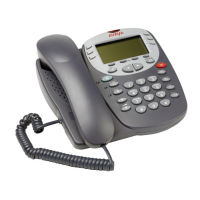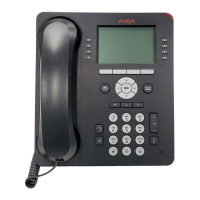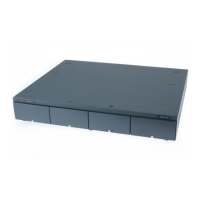IP500/IP500 V2 Installation Page 371
15-601042 Issue 25i (03 January 2013)IP Office 8.0
System Components: Applications
9.14.14 IP Office Ports
Most PC firewalls will request the user to allow various exceptions when a newly installed application is first run. However
this may not always be the case, especially if the firewall is located elsewhere than the user's PC.
Adding Firewall Exceptions
The file avayafw.bat can be used to open up the necessary firewall exceptions for IP Office applications. The file can be
downloaded from http://marketingtools.avaya.com/knowledgebase/tools/firewall.
It only works for:
· The default Windows XP/Windows 2003 firewall.
· The application must be installed for the exception to be created.
· The application must be installed in the default location.
Whilst avayafw.bat only works subject to the conditions above, for other firewalls study of this file will indicate the
necessary application files and ports for which exceptions need to be created.
Ports Used
The list below details many of the IP ports used by IP Office control units and IP Office applications. Many of these are
standard ports for different IP traffic protocols.
Indicates a listening port on the IP Office control unit. indicates a port to which the IP Office sends, for example to a
PC running an IP Office application.
* Indicates that the port and or protocol can be changed.
Email system alarms from the IP Office to SMTP server. For IP Office 4.2 also used
for Voicemail Email on Embedded Voicemail.
Time requests from the IP Office to a Time Server (RFC868).
Domain Name Service responses.
File requests to the IP Office.
File requests by the IP Office.
To addresses set in the IP Office configuration.
Key exchange for IPSec protocol.
Lightweight Directory Access Protocol.
HTTPS communication with IP Office provisioned DECT, IP Office Softphone.
To and from the IP Office to other RIP devices. For RIP1 and RIP2 (RIP1
compatible) the destination address is a subnet broadcast, eg. 192.168.42.255.
For RIP2 Multicast the destination address is 224.0.0.9.
Layer 2 tunneling protocol.
H.323 Status. VoIP device registering with the IP Office.
H.323 Signalling. Data to a registered VoIP device.
PC Wallboard to CCC Wallboard Server.
Port used for STUN requests from the IP Office to the SIP provider.
RTCP Monitoring information from Avaya H323 phones.
Browser access to the Delta Server application.
From the IP Office to the Conferencing Center Server Service. User access to the
Conferencing Center is direct via HTTP sessions.
Browser access to the IP Office ContactStore (VRL) application.

